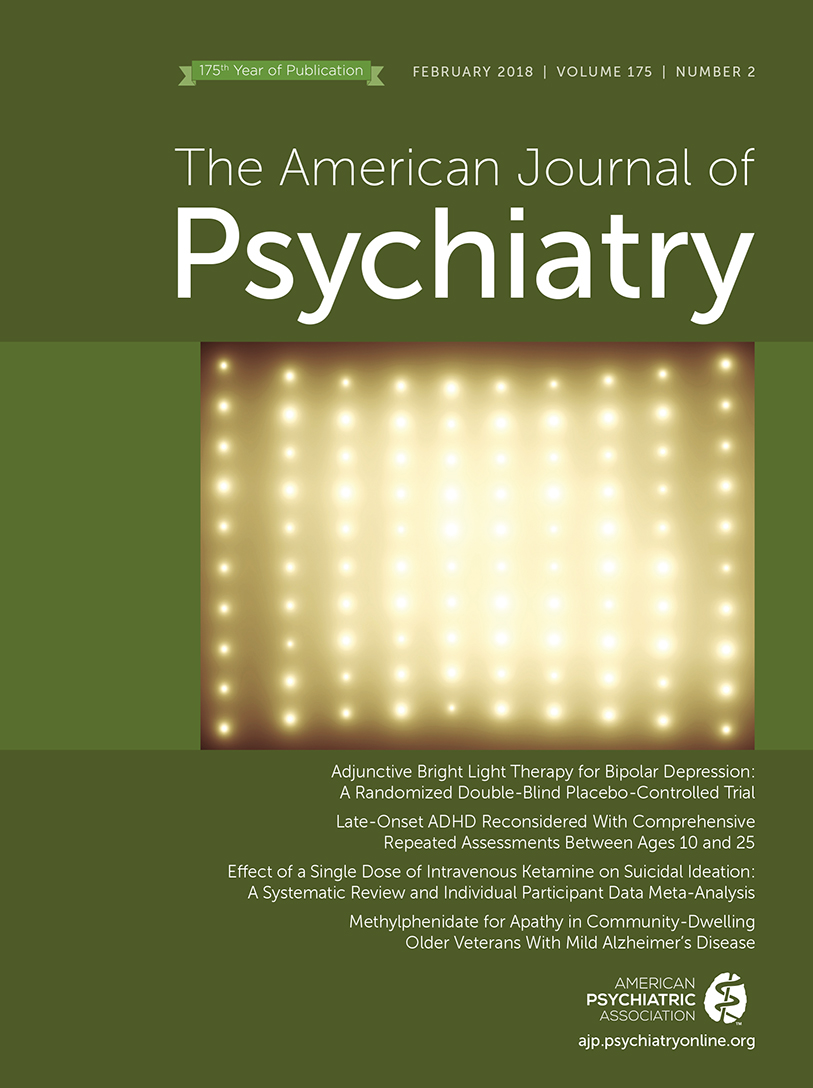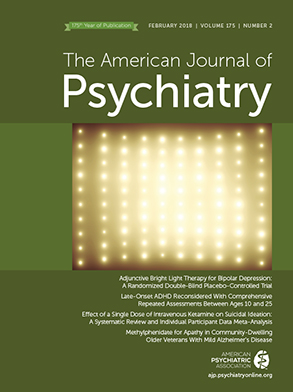The Effect of a Single Dose of Intravenous Ketamine on Suicidal Ideation: A Systematic Review and Individual Participant Data Meta-Analysis
Abstract
Objective:
Method:
Results:
Conclusions:
Method
Study Identification and Selection
Statistical Analysis
Results
Included Studies
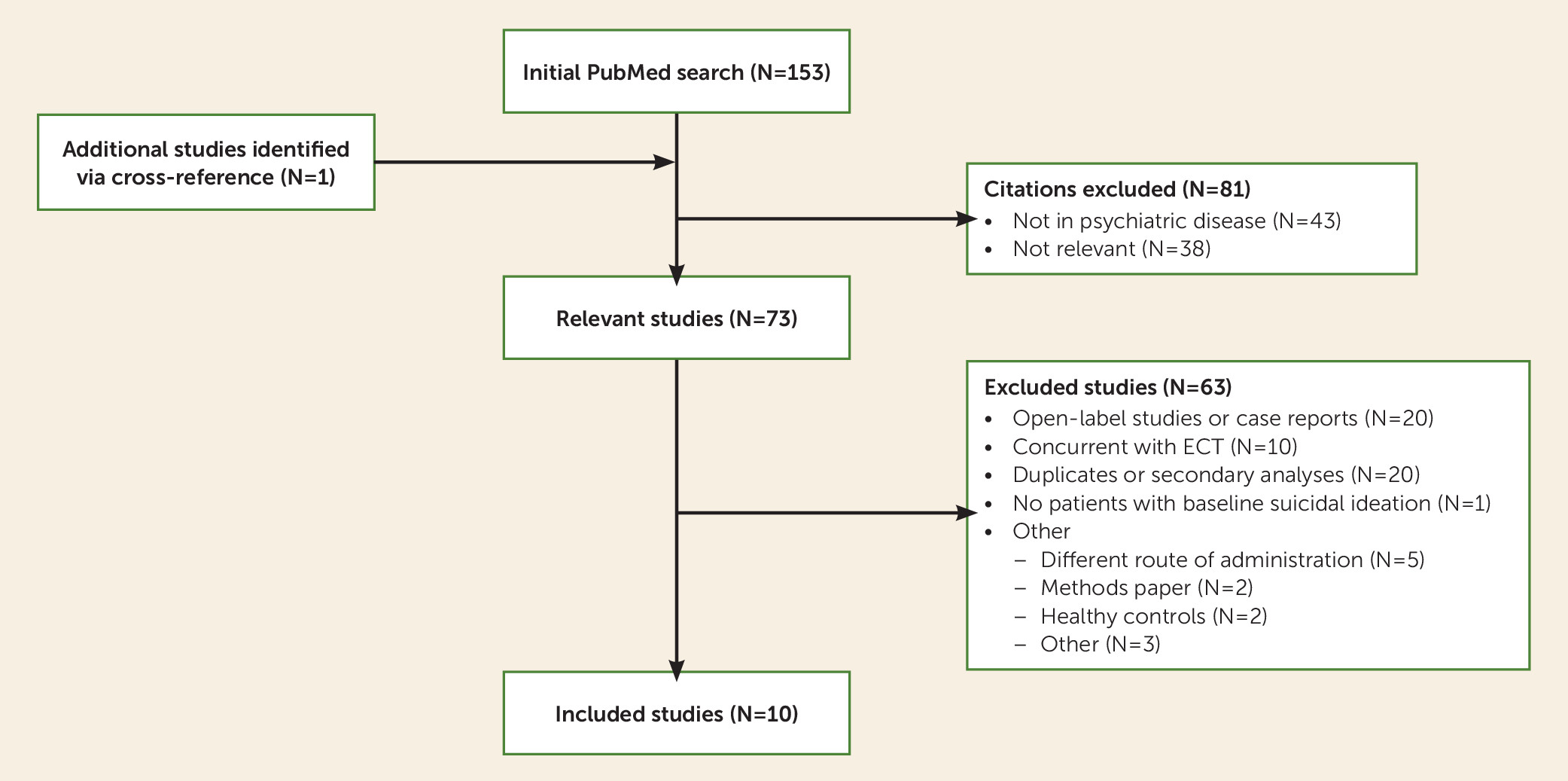
Characteristics of the Included Sample
| Concomitant Medicationsa | |||||||
|---|---|---|---|---|---|---|---|
| Authors (Reference Number) | Total N | Included N | Setting | Control Treatment | Diagnosis | N | % |
| Berman et al. (10) | 8 | 5 | Outpatient | Saline | Major depression | 0 | 0 |
| Valentine et al. (23) | 11 | 4 | Outpatient | Saline | Major depression | 0 | 0 |
| Sos et al. (22) | 27 | 9 | Inpatient | Saline | Major depression | 9 | 100 |
| Murrough et al. (14) | 73 | 35 | Inpatient/ outpatientb | Midazolam | Major depression | 0 | 0 |
| Feder et al. (20) | 41 | 5 | Inpatient/ outpatientb | Midazolam | Posttraumatic stress disorder | 0 | 0 |
| Ballard et al.c (15) | 87 | 59 | Inpatient | Saline | Major depression or bipolar disorder | 26 | 44 |
| Hu et al. (21) | 27 | 26 | Outpatient | Saline | Major depression | 26 | 100 |
| Murrough et al. (17) | 24 | 24 | Inpatient/ outpatient | Midazolam | Mixedd | 19 | 79 |
| Total | 298 | 167 | 80 | 48 | |||
The Effects of Ketamine on Clinician-Administered Suicidal Ideation Item Scores
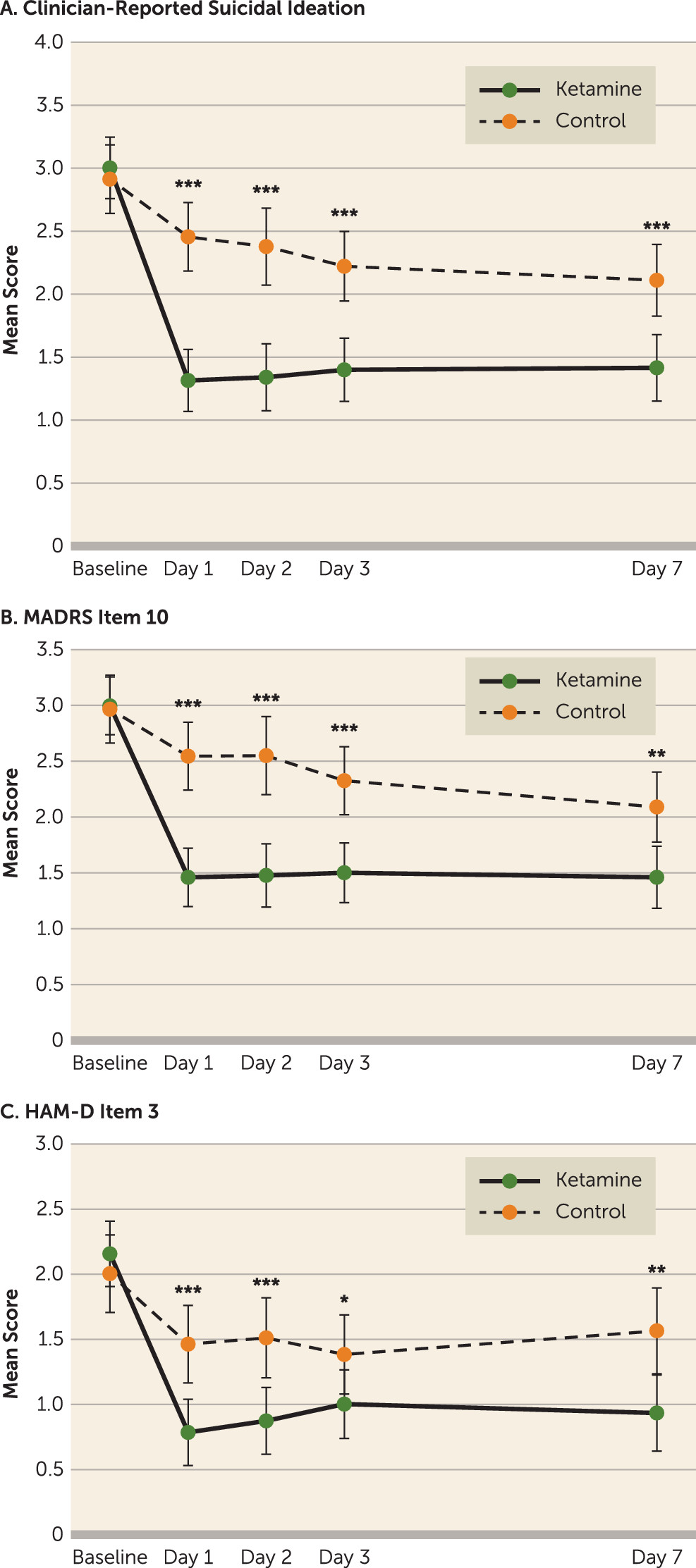
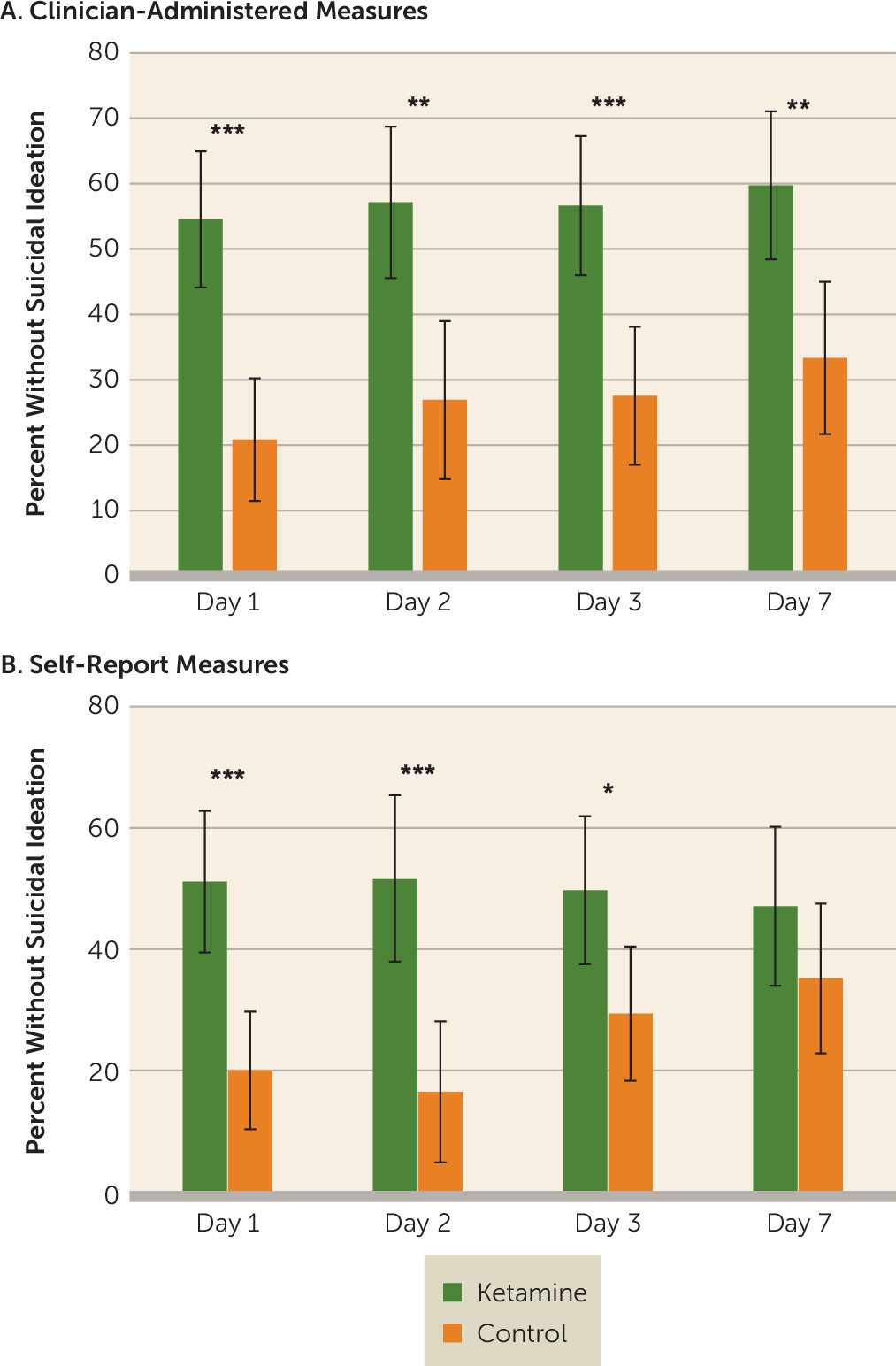
The Effects of Ketamine on Self-Reported Suicidal Ideation
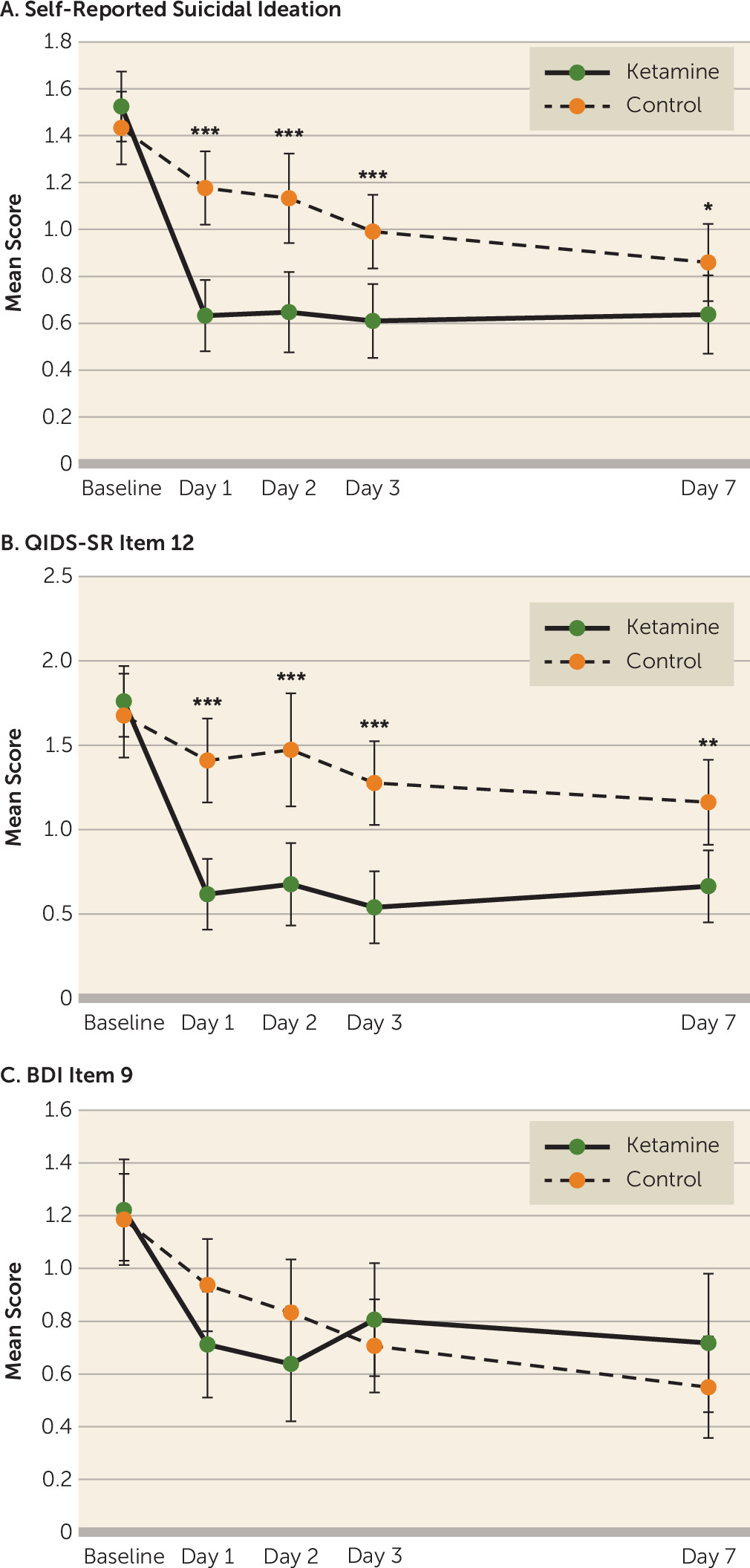
Correlation Between Suicidal Ideation and Severity of Depressive Symptoms
Independence of Improvement Measures for Suicidal Ideation and Change in Severity of Depressive Symptoms
Durability of Effect
Midazolam Versus Saline as Control Treatment
Discussion
Pseudospecificity
Limitations
Future Work
Conclusions
Acknowledgments
Supplementary Material
- View/Download
- 187.48 KB
References
Information & Authors
Information
Published In
History
Keywords
Authors
Author Contributions
Funding Information
Metrics & Citations
Metrics
Citations
Export Citations
If you have the appropriate software installed, you can download article citation data to the citation manager of your choice. Simply select your manager software from the list below and click Download.
For more information or tips please see 'Downloading to a citation manager' in the Help menu.
View Options
View options
PDF/EPUB
View PDF/EPUBLogin options
Already a subscriber? Access your subscription through your login credentials or your institution for full access to this article.
Personal login Institutional Login Open Athens loginNot a subscriber?
PsychiatryOnline subscription options offer access to the DSM-5-TR® library, books, journals, CME, and patient resources. This all-in-one virtual library provides psychiatrists and mental health professionals with key resources for diagnosis, treatment, research, and professional development.
Need more help? PsychiatryOnline Customer Service may be reached by emailing [email protected] or by calling 800-368-5777 (in the U.S.) or 703-907-7322 (outside the U.S.).
